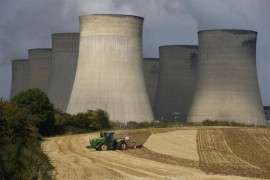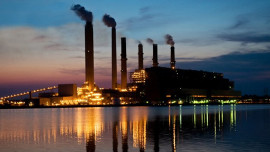
But the bad news is that over 8,000 MW of this energy will come from coal — major source of carbon emissions in China itself. What consequences will the coal-fired plants, particularly in central Punjab have, usually enveloped by smog in December? China, which surpassed the US in carbon dioxide emission in 2007 becoming leader in world pollution, is already reeling from the impact of the coal energy. In 2014, for instance, Chinese scientists compared the toxic haze to a “nuclear winter” that “has started slowing down photosynthesis in plants.”
And recently in December 2016, environmental protection officials called on the government to issue red smog alerts for 23 cities in northern China. Beijing officials had already issued a red alert after warnings of a build-up of toxic air pollution during cold weather. An additional nine industrial cities had also been advised to issue the lowest-level orange alert. In fact, images of school children taking exam in an open football stadium enveloped in a dense cloud of noxious pollution, which triggered the smog “red alert” on December 20, went viral on the social media.
Taking cognisance of the choking smog, Chinese officials began taking its environmental problems seriously in the year 2014. They struck a deal with the US to reduce the rate of its carbon emissions by 2030. Statistics from the Chinese National Bureau of Statistics show slight reduction in coal consumption (to 3.7 per cent and 2.9 per cent in 2015 and 2014, respectively). But obviously it has to go a long way because 70 per cent of the China’s electric power comes from burning coal and the consumption is estimated to be nearly as much as rest of the world combined.
The thoughtless rush for coal-fired energy by a politically motivated Pakistani ruling elite is both alarming and questionable. Minister Ahsan Iqbal and other leading lights from Punjab know what havoc the fog and smog play with life in winter. They also know unscrupulous nature of the mighty business cartels behind the energy plants. Those running and approving these cartels — politicians, businessmen and bureaucrats, are least bothered about the environmental hazards of coal energy in a country where bribes cover up violations of law.
Most of these businessmen and their political patrons, with second permanent residences and interests parked in the US, Canada and Europe, seem to ignore the havoc coal energy has played in China. For them the overriding motive of importing mostly second and third generation coal-fired plants appears to be quick hefty windfalls.
And let us not blame China for the cunning attitude of our rulers and businessmen. If we go by what Ahsan Iqbal told the parliamentary committee on January 16, it suggests that Beijing has been sensitive to, and adjusting, the CPEC plans to the demands by K-P and Balochistan. They have been facilitating Pakistani wish list as and when necessary following the discord between Islamabad, Peshawar and Quetta.
Most of Pakistan’s big cities such as Karachi, Faisalabad, Multan, Gujrat, Gujranwala, Peshawar and Quetta are already air-water polluted. With the induction of coal energy, and little hope for adherence to environmental standards, this situation will deteriorate. And responsibility for this disaster in the making will rest on Asif Ali Zardari as well as the Sharif brothers, ably supported by a pliant bureaucracy and avaricious business community.
Published in The Express Tribune, January 18th, 2017.
Like Opinion & Editorial on Facebook, follow @ETOpEd on Twitter to receive all updates on all our daily pieces.





























1714024018-0/ModiLara-(1)1714024018-0-270x192.webp)









COMMENTS (3)
Comments are moderated and generally will be posted if they are on-topic and not abusive.
For more information, please see our Comments FAQ